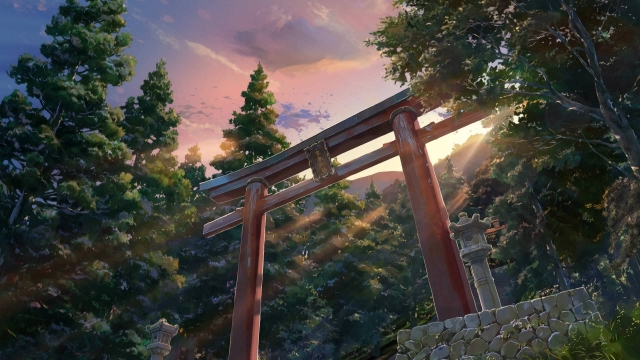
Japan, a land woven with rich traditions and spiritual heritage, boasts an array of shrines that are not only places of worship but also embodiments of the country’s culture and history. From the tranquil forests of Kumano to the bustling streets of Kyoto, these sacred sites attract millions of visitors each year, each drawn by the unique experiences and profound significance that each shrine offers. As we embark on this journey through Japan’s most revered shrines, we will explore their histories, architectural styles, and the festivals that breathe life into them.
In this exploration, we aim to rank these remarkable shrines not merely based on their popularity, but also their cultural impact, historical significance, and spiritual essence. Whether you are seeking a quiet place for reflection or a vibrant atmosphere filled with rituals and celebrations, our ranking will guide you through the sacred landscapes of Japan, uncovering the stories and traditions that make these sites truly special. Join us as we delve into the heart of Japan’s shrine rankings, celebrating the sanctity and beauty of these cherished landmarks.
Cultural Significance of Shrines
Shrines in Japan hold a profound cultural significance, representing the spiritual and historical heart of the nation. They serve as places of worship and reflection for the Shinto religion, where kami, or spirits, are revered. Each shrine is often dedicated to specific deities or ancestral spirits, making them a focal point for various rituals and festivals that celebrate Japan’s rich traditions. The intimacy of these spaces allows visitors to connect with Japan’s past, fostering a sense of community and continuity among generations.
Beyond their religious importance, shrines also symbolize the artistic and architectural heritage of Japan. Many shrines feature stunning designs that reflect the natural beauty of their surroundings, creating a harmonious blend of nature and architecture. The use of traditional materials and construction techniques is evident in these sites, showcasing the craftsmanship that has been passed down through centuries. Visitors to these shrines can appreciate not only the spiritual aspects but also the aesthetic values inherent in their design.
Furthermore, shrines play a vital role in the local economy and tourism industry. They attract millions of visitors each year, both domestic and international, who seek to experience the tranquil atmosphere and partake in various cultural practices. This inflow of visitors promotes local businesses and preserves traditional crafts, ensuring that the cultural practices associated with these shrines continue to thrive. As such, the significance of shrines extends beyond the spiritual realm, encompassing economic, social, and cultural dimensions that are integral to Japan’s identity.
Best Shrines to Visit in Japan
Top Ranked Shrines in Japan
Japan is home to countless shrines, each with its unique history and significance. Among them, Ise Jingu stands out as one of the most revered. Located in Mie Prefecture, this shrine is dedicated to Amaterasu, the sun goddess and the ancestor of the Imperial family. The shrine’s two main structures, Naiku and Geku, are estimated to be over 2,000 years old. Every 20 years, the shrine is rebuilt as part of a beautiful tradition, symbolizing renewal and continuity. Visitors are not only drawn to its spiritual atmosphere but also to its stunning natural surroundings.
Another gem in Japan’s shrine hierarchy is Fushimi Inari Taisha in Kyoto. Famous for its thousands of vibrant red torii gates that wind through the forest of Mount Inari, this shrine is dedicated to Inari, the god of rice and agriculture. The path to the summit offers breathtaking views and a serene space for reflection. Throughout the year, the shrine hosts numerous festivals that showcase traditional ceremonies and local culture, making it a vibrant hub for both worshippers and tourists alike.
Lastly, Meiji Jingu in Tokyo serves as a striking contrast to the bustling city. This shrine honors Emperor Meiji and Empress Shoken, who played pivotal roles in the modernization of Japan during the late 19th century. Nestled within a forested area, Meiji Jingu offers a peaceful retreat from urban life, with its serene paths and tranquil gardens. The shrine’s architectural elegance and spiritual significance draw visitors from around the world, affirming its place among Japan’s top-ranked sacred sites.
Visitor Experiences and Practices
When visiting Japan’s revered shrines, the atmosphere of tranquility and reverence is palpable. Many visitors are drawn not only to the beautiful architecture but also to the serene surroundings that offer a respite from the hustle and bustle of modern life. Walking through the torii gates, guests often feel a deep sense of connection to nature and the spiritual world. The careful design of these sacred spaces encourages meditation and reflection, making each visit a unique personal journey.
To deepen their experience, many attendees engage in traditional practices, such as purification rituals at the temizuya, where they cleanse their hands and mouths before approaching the shrine. This act symbolizes a commitment to entering a sacred space with a clear and respectful mindset. Visitors may also purchase omamori, protective charms, and write their wishes on ema, wooden plaques that they hang at the shrine. These rituals help to foster a sense of community and personal connection to the spiritual significance of these sites.
The festivals held at various shrines throughout the year offer vibrant displays of culture and tradition, attracting both locals and tourists. Participants can witness colorful parades, traditional music, and captivating dances that celebrate the shrine’s deity. These events not only enrich the visitor’s experience but also highlight the enduring importance of shrines in Japanese spiritual and social life. Whether through solemn quietude or lively festivities, each interaction with Japan’s shrines leaves a lasting impression.
Preservation and Future of Shrines
The preservation of Japan’s shrines is vital for maintaining the cultural heritage and religious practices that have been handed down through generations. Many shrines, such as Fushimi Inari Taisha and Meiji Shrine, not only serve as places of worship but also as symbols of the historical and spiritual identity of the Japanese people. To ensure that these sacred sites endure, efforts are being made to repair and restore structures, maintain sacred artifacts, and protect the surrounding natural environment. Collaboration between local communities, religious organizations, and governmental bodies has become increasingly important in these preservation efforts.
However, the challenge of modernization poses a significant threat to many shrines. As urban development expands and societal values shift, some shrines find themselves at risk of losing their cultural significance. Integrating traditional practices with contemporary lifestyles is crucial for ensuring continued reverence for these sites. Innovative approaches, such as incorporating technology for virtual experiences or community events that attract younger generations, are being explored to engage people and foster a renewed interest in sacred traditions.
Looking ahead, the future of Japan’s shrines hinges on a balance between preserving tradition and embracing change. Advocacy for sustainable tourism can help protect the sanctity of these spaces while allowing for public appreciation and education. By highlighting the importance of shrines not just as tourist attractions but as living cultural centers, there is hope for their continued reverence and vitality in Japanese society. The collective responsibility of individuals, communities, and institutions will play a pivotal role in shaping the trajectory of these revered places.



